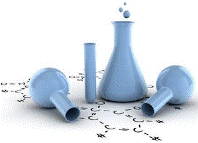Chemical and Biomolecular Engineering, Department of
Date of this Version
2019
Document Type
Article
Citation
Sahu et al. BMC Musculoskeletal Disorders (2019) 20:193
https://doi.org/10.1186/s12891-019-2566-4
Abstract
Background: Cartilage repair outcomes are compromised in a pro-inflammatory environment; therefore, the mitigation of pro-inflammatory responses is beneficial. Treatment with continuous low-intensity ultrasound (cLIUS) at the resonant frequency of 5 MHz is proposed for the repair of chondral fissures under pro-inflammatory conditions.
Methods: Bovine osteochondral explants, concentrically incised to create chondral fissures, were maintained under cLIUS (14 kPa (5 MHz, 2.5 Vpp), 20 min, 4 times/day) for a period of 28 days in the presence or absence of cytokines, interleukin-6 (IL-6) or tumor necrosis factor (TNF)α. Outcome assessments included histological and immunohistochemical staining of the explants; and the expression of catabolic and anabolic genes by qRT-PCR in bovine chondrocytes. Cell migration was assessed by scratch assays, and by visualizing migrating cells into the hydrogel core of cartilage-hydrogel constructs.
Results: Both in the presence and absence of cytokines, higher percent apposition along with closure of fissures were noted in cLIUS-stimulated explants as compared to non-cLIUS-stimulated explants on day 14. On day 28, the percent apposition was not significantly different between unstimulated and cLIUS-stimulated explants exposed to cytokines. As compared to non-cLIUS-stimulated controls, on day 28, cLIUS preserved the distribution of proteoglycans and collagen II in explants despite exposure to cytokines. cLIUS enhanced the cell migration irrespective of cytokine treatment. IL-6 or TNFα-induced increases in MMP13 and ADAMTS4 gene expression was rescued by cLIUS stimulation in chondrocytes. Under cLIUS, TNFα-induced increase in NF-κB expression was suppressed, and the expression of collagen II and TIMP1 genes were upregulated.
Conclusion: cLIUS repaired chondral fissures, and elicited pro-anabolic and anti-catabolic effects, thus demonstrating the potential of cLIUS in improving cartilage repair outcomes.



Comments
© The Author(s). 2019 Open Access This article is distributed under the terms of the Creative Commons Attribution 4.0 International License